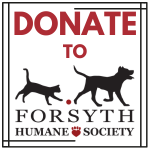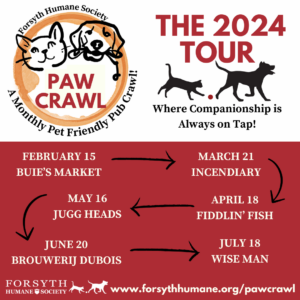Written By: Mark Neff, President & CEO of Forsyth Humane Society In the bustling, heartwarming, yet often heart-wrenching world of animal welfare, communication is both a beacon of hope and a challenge to surmount. As President and CEO of Forsyth Humane Society, I’ve navigated the diverse currents of communication that flow between our staff, volunteers, foster […]
Embracing Change and Growth in the New Year at Forsyth Humane Society
Written By: Mark Neff, President & CEO of Forsyth Humane Society As we step into another promising year at the Forsyth Humane Society, I find myself reflecting on our journey and looking forward with renewed enthusiasm. This year is particularly momentous for us as we eagerly anticipate the opening of our new spay-neuter clinic, a […]
Navigating the Tides of Change: The Challenges of Animal Welfare in Post-Pandemic Times
Written By: Mark Neff, President & CEO of Forsyth Humane Society As we move through the post-pandemic era, animal welfare agencies face unprecedented challenges in our mission to protect and care for animals. Today, I want to share some of these challenges, the impact on teams, and the importance of support in these trying times. […]
The Detriment of Division: When Animal Welfare Organizations Attack Each Other
Written By: Mark Neff, President & CEO of Forsyth Humane Society In the vast world of animal welfare, the landscape is painted with countless stories of rescues, rehabilitations, and rehomes. Every day, countless heroes emerge, striving to make a difference in the lives of animals who cannot speak for themselves. However, a growing trend that […]
📢 Breaking News: Forsyth Humane Society’s Next Endeavor – A New Low-Cost Spay/Neuter & Wellness Clinic at 725 Waughtown Street! 🏥🐾
Dear friends and supporters, We are thrilled to share some incredible news that’s bound to make a paw-sitive impact on our community! Forsyth Humane Society is proud to announce the acquisition of the 725 Waughtown Street location, where we’ll soon be opening a state-of-the-art Low-Cost Spay/Neuter & Wellness Clinic! Our mission has always been to […]







